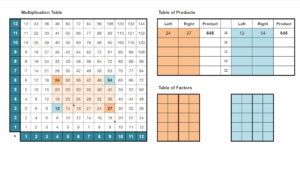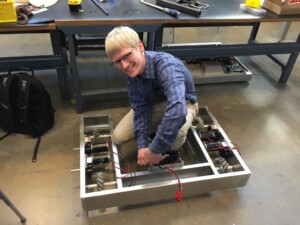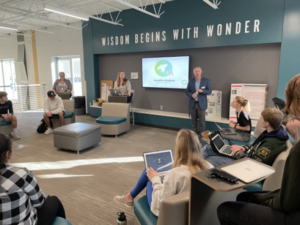7 Trends That Shaped 2014; 7 Problems We’ll Solve in 2015

It was an odd year in US education. There seemed to be more talk about what people are against than what they are for. Federal K-12 education policy (ESEA) should have been revised a decade ago and is badly out of date.
High school graduation rates topped 80% and are as high as they’ve ever been. US students made progress on NAEP, especially Hispanic kids. But progress stalled in the nation’s largest districts. Leaders in NYC stopped doing what was obviously working. After helping LAUSD make real progress, John Deasey stepped down. Fortunately places like Houston, Denver, and New Orleans keep chugging along.
Like the end of 2013, the stock market is at record highs–the Dow reached 16,000 in December 2013 and 18,000 this month. Consumer confidence is up, tax receipts and unemployment rates recovered to pre-recession levels. Real estate prices have rebounded in most areas. However, State K-12 education spending per pupil fell in 29 states since 2008. The continued need to do more with less is the first of 7 trends that shaped 2014.
- Productivity. As Secretary Duncan announced in 2010, we now operate in a “new normal” age, one with the potential and need for “transformational productivity.” While most states aren’t making big contributions to the digital conversion like Ohio’s Straight A Fund, some foundations and nonprofits joined the effort to help create schools that work better for less (e.g., New Staffing Structures Piloted in Nashville Schools).
- EdTech. While unremarkable for innovation, another year of more than $1.2 billion invested in US education technology startups yielded a handful of startups achieving real scale–Edmodo serves 45 million users, Class Dojo serves 35 million, Coursera has 11 million learners, and 1 million teachers use MasteryConnect*. Publishers of the last century have transformed themselves into personal digital learning service providers. Learning tools and resources get better every month.
- Access. Mobile access expanded at home and the majority of public districts dropped their cell phone bans and gave teachers the option to make use of all mobile tech coming to class. Chromebooks emerged as a new favorite at schools backed by increasingly useful Google Apps for Education.
- Next gen. Hundreds of new and transformed schools exhibited personalized, blended, and competency-based learning. Evidence that next gen environments work better for students and teachers continues to grow. We tracked the progress of 14 teams developing new and transformed schools and wrote about applying the same strategies–personalized, blended, and competency-based–to preparing teachers.
- Competence. Globalizing employment markets are increasing the return on competence and initiative–and driving growing interest in deeper learning and habits of success. (See advice from teachers on building an innovation mindset.)
- Fast path. New flexible and affordable postsecondary options are making it possible for Millennials worried about big tuition bills and high young adult unemployment to assemble personalized new career pathways. Code schools and competency-based options like College for America and WGU are rapid and affordable options. We’re telling the stories of Generation Do-It-Yourself (#GenDIY) on Huffington Post and Getting Smart.
- Nays have it. The anti-Core, anti-federal, anti-testing, anti-reform, and anti-enterprise groups combined forces and had a field day in 2014–they called BS on common standards and week-long end-of-year tests, they expounded privacy concerns, and they ran off some really good state chiefs. Andy Smarick called it the end of an EdReform era, but the first six factors are overwhelming this era of political wandering with positive momentum and broader access to powerful learning.
Perhaps the most significant and least appreciated trend is teacher leadership. Some places figured that out–including Washington DC, Fulton County, and Rhode Island–and harnessed teacher energy and initiative.
7 Problems. Solutions to 7 problems will emerge in 2015:
- Combining formative. More students are learning, practicing and applying skills in several engaging modalities most providing frequent instructional feedback. In 2015, a couple different organizations will combine the assessment information from multiple sources in ways that are useful for driving instructional improvement or managing student progress. Super gradebooks will be a killer app.
- Comparable growth. Once formative data can be tagged and combined in consistent ways, it will be possible to improve the ability to calculate individual growth rates and compare academic progress of individual students in different learning environments (see feature).
- Secondary v3.0. There will be a couple new personalized learning models in 2015. There is a growing list of cities using the Next Generation Learning Challenges framework to develop new and transformed schools. Summit Public Schools will open schools in Washington State (there is still time to join their blended journey by applying to their Basecamp program). NewClassrooms will launch a new version of the blended middle grade math program next summer.
- Achievement recognition. The stars appear to be aligned for several more comprehensive systems that include competency maps (of what students should know and be able to do), competency-based assessment systems, and achievement recognition capabilities (e.g., badges, micro-credentials) that promote student ownership. Thoughtful systems will track habits of success as well as foundational skills and will promote more equitable results with strong supports and extended learning time for struggling students.
- Show what you know. A state that has left the consortia will make competency-based advancements to policy and assessment including eliminating seat time, adding competency components to graduation requirements, and using frequently scheduled secondary end of course exams. They may use an innovation zone (discussed here) an incentive for schools, networks, and districts.
- Credentialing. States, districts and networks will adopt competency maps for educators including blended learning and differentiated staffing (see Preparing Teachers and iNACOL Blended Learning Teacher Competency Framework).
- Guidance and support systems. With more informal modular and mobile learning options, expanding access to part time online learning (often called Course Access) and new postsecondary options, secondary students need stronger guidance and support–the spine of next gen secondary schools (see paper).
New school models are making it possible to challenge advanced learners and accelerate struggling students. However, states and districts need to remain vigilant about equity–the shift to personal digital learning will exacerbate gaps without a continued focus on the least well served neighborhoods and students.
For EdTech entrepreneurs and EdLeaders there’s never been a better time to make a difference.
* Portfolio companies of Learn Capital where Tom Vander Ark is a partner. Next Generation Learning Challenges is a Getting Smart Advocacy Partner.






0 Comments
Leave a Comment
Your email address will not be published. All fields are required.